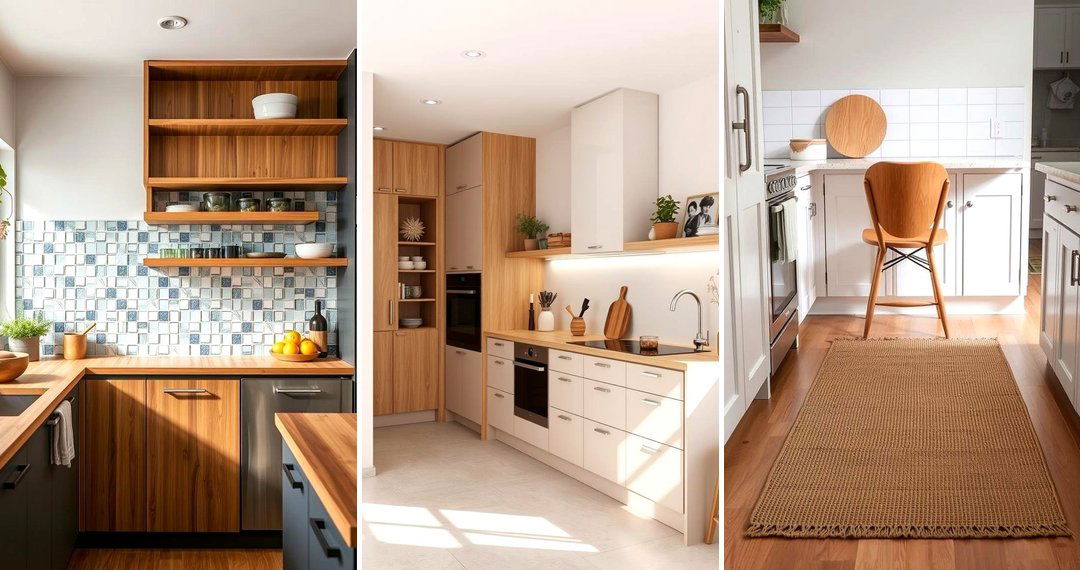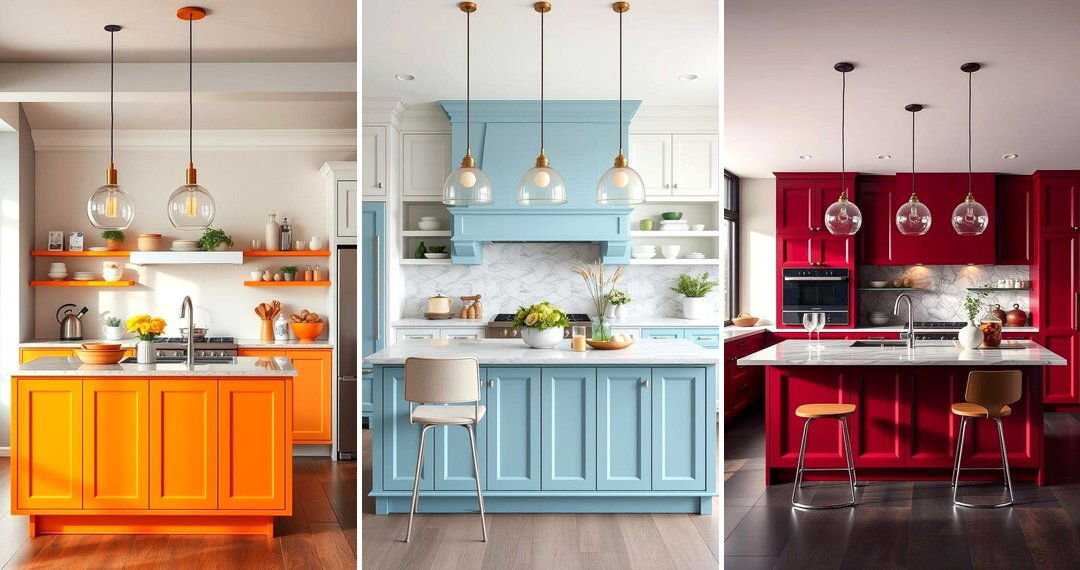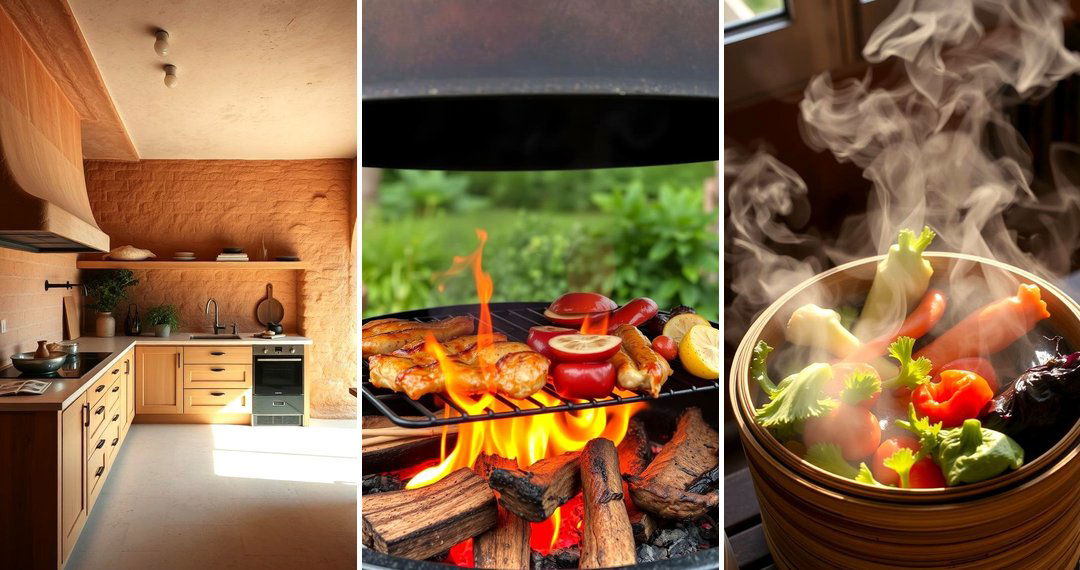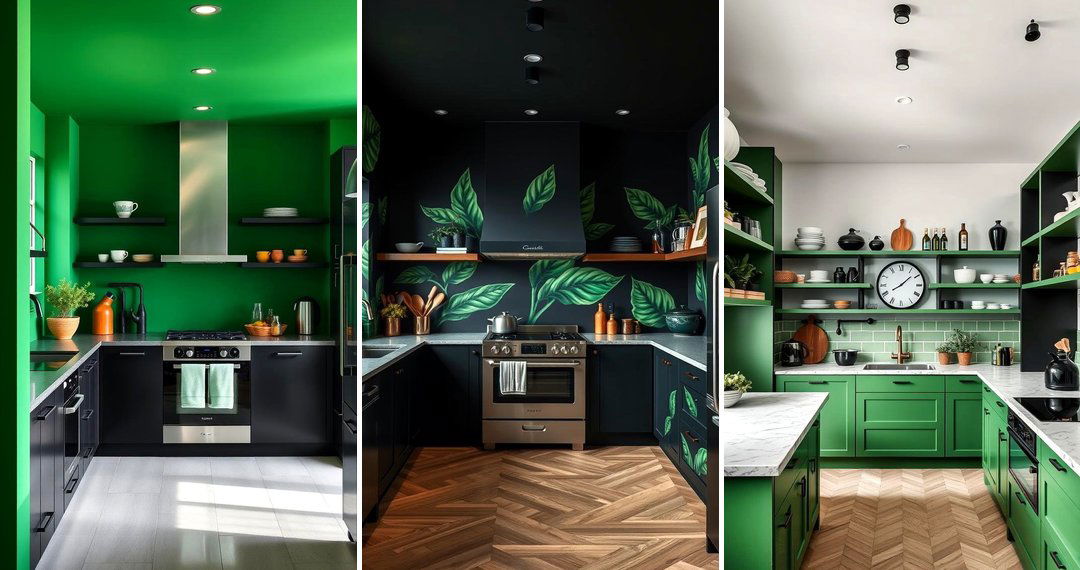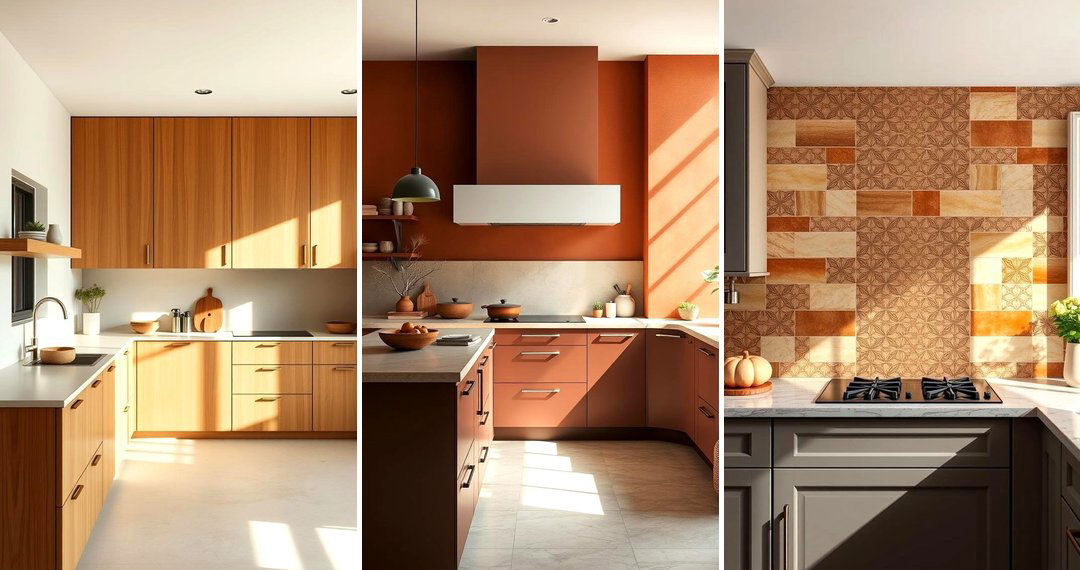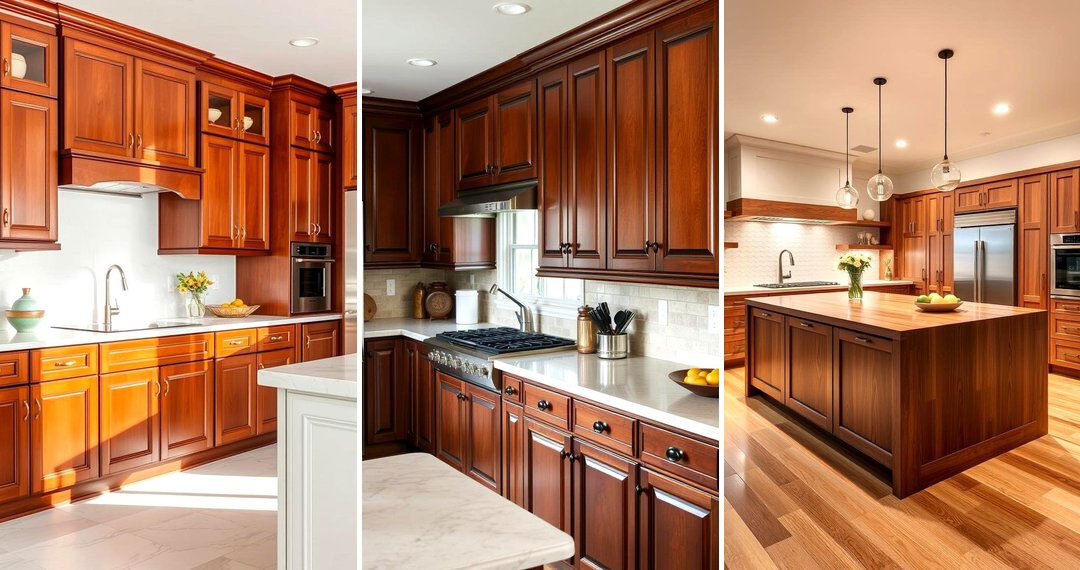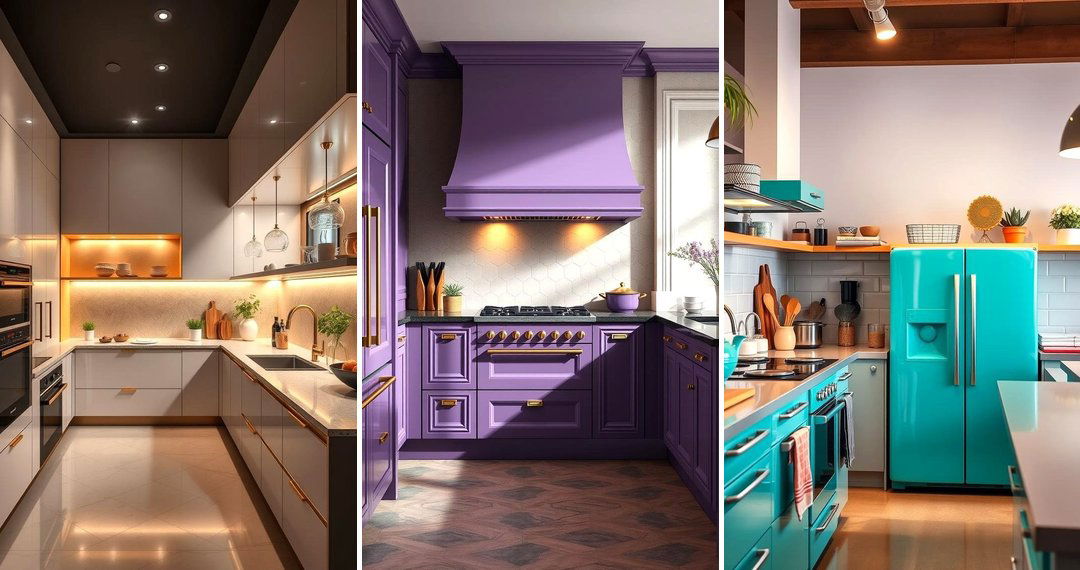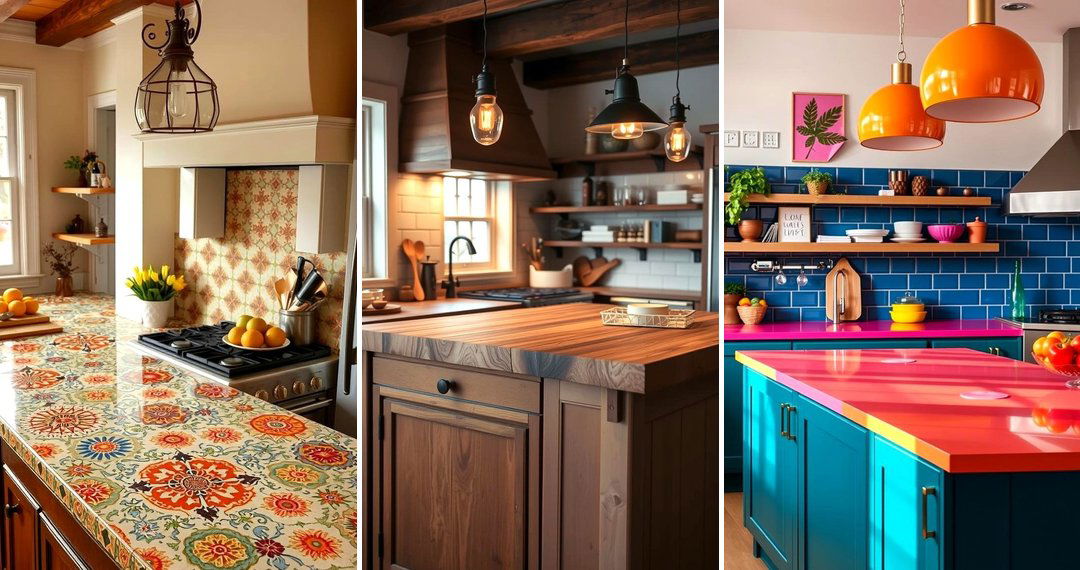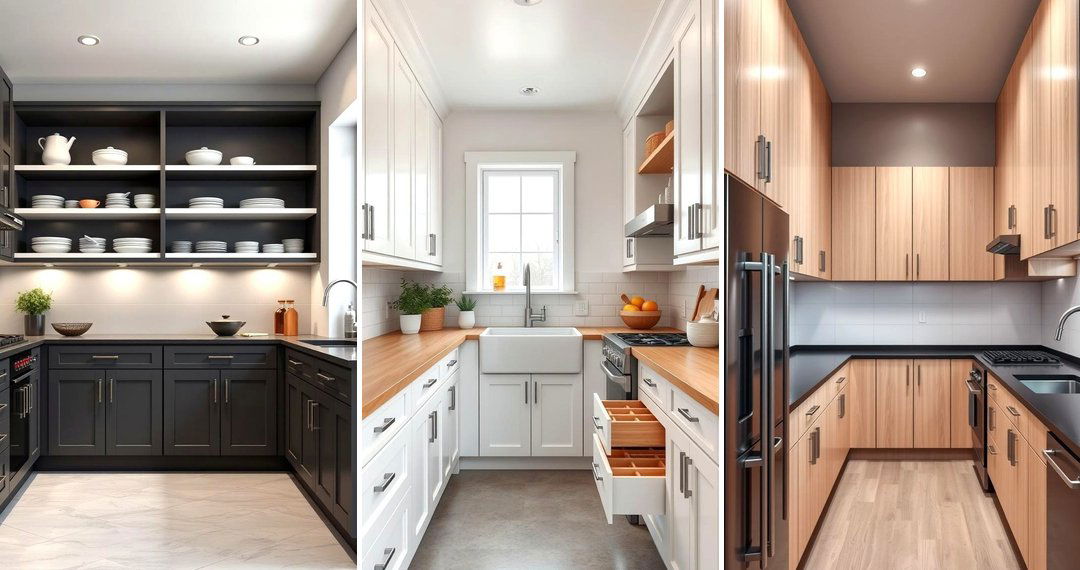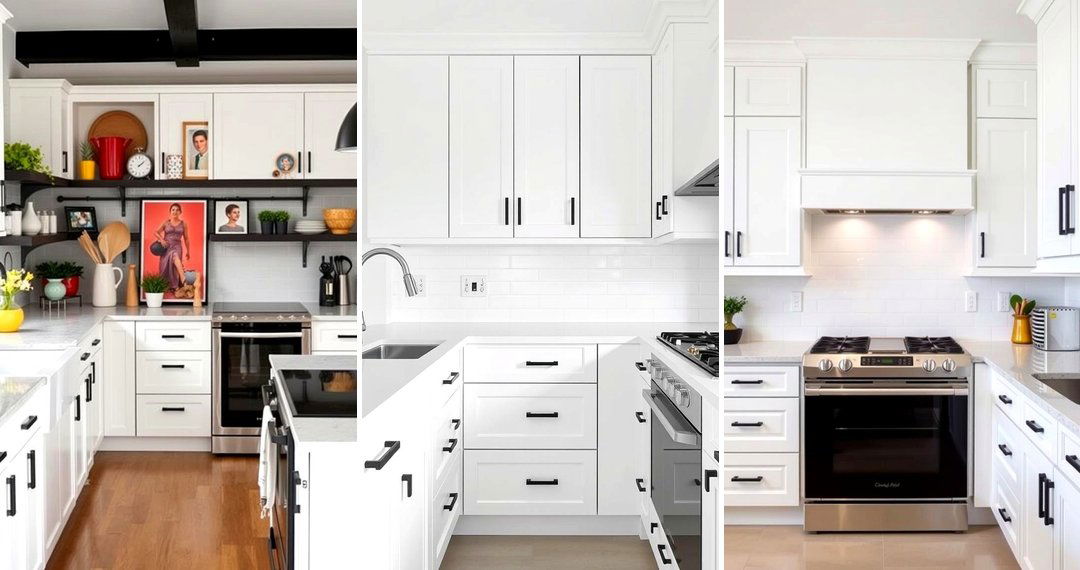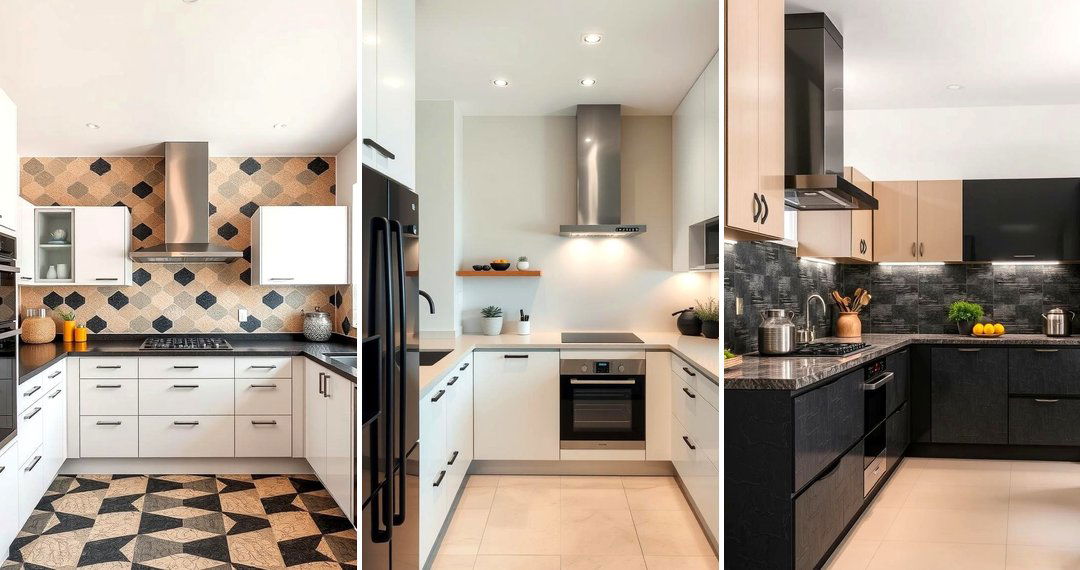Imagine stepping into a kitchen where the air feels fresh, the materials speak of nature, and every element contributes to a sense of calm and well-being. This is the essence of organic kitchen design, a philosophy that goes beyond fleeting trends to create a space that nourishes both body and soul. It's about thoughtfully selecting materials, embracing natural light, and fostering a connection with the environment, transforming your kitchen into a haven of health and happiness. Let's explore some inspiring ideas to bring this organic vision to life.

1. Natural Wood Cabinetry
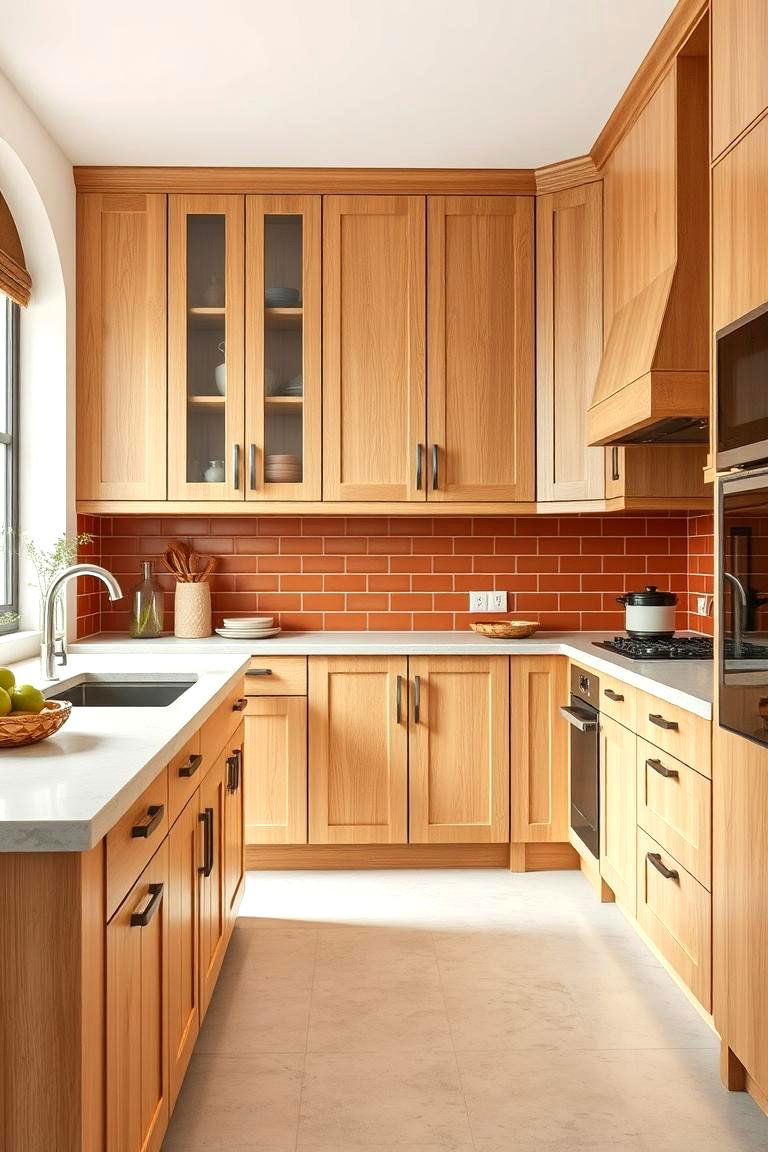
The warmth and inherent beauty of natural wood cabinetry immediately establish an organic foundation in your kitchen. Consider the rich textures and grains of oak, maple, or bamboo, each bringing its unique character to the space. Beyond aesthetics, sustainably sourced wood is an environmentally conscious choice, aligning perfectly with the organic ethos. These cabinets offer durability and a timeless appeal, ensuring your kitchen remains stylish and functional for years to come. With various stains and finishes available, you can tailor the look to perfectly complement your personal taste and the overall design scheme.
2. Stone Countertops

Bringing the raw beauty of the earth into your culinary space, stone countertops like granite, marble, or slate are quintessential elements of organic kitchen design. The unique veining and natural variations in each slab create a one-of-a-kind focal point. For practicality, these surfaces are incredibly durable and heat-resistant, ideal for a busy kitchen environment. Moreover, stone is a natural material that evokes a sense of permanence and grounding, contributing to the overall organic and calming atmosphere you desire in your kitchen.
3. Bamboo Flooring
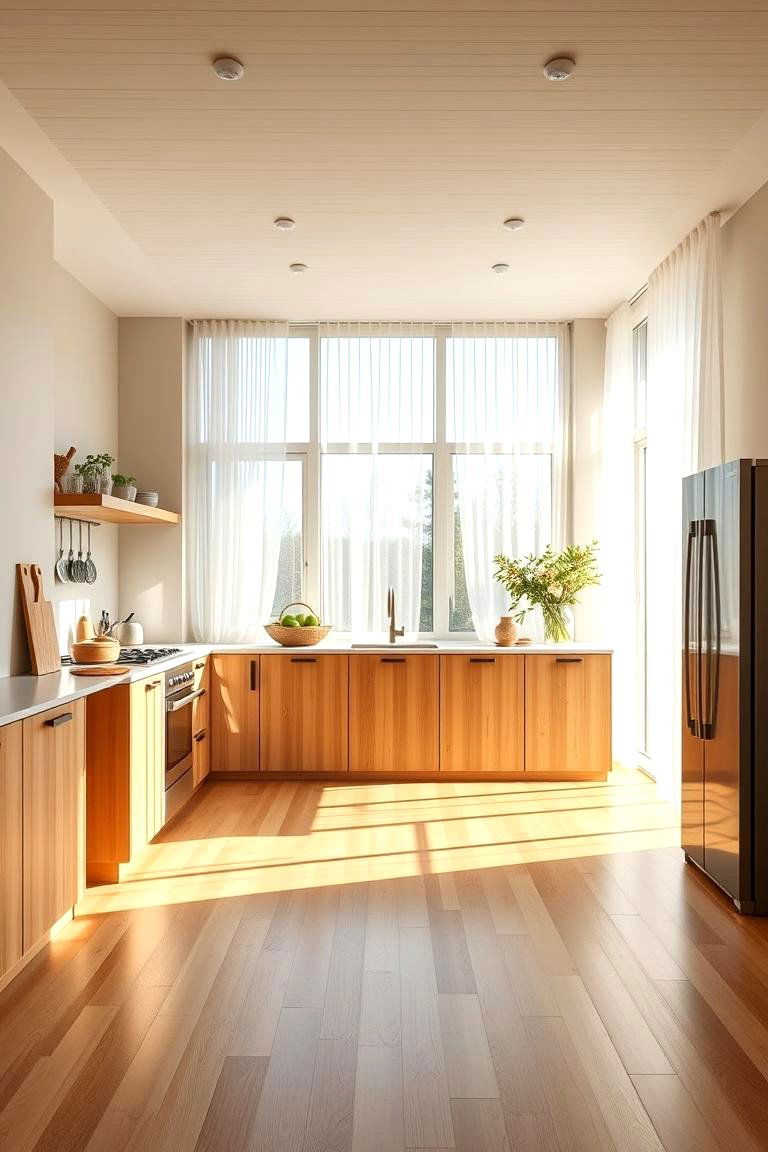
Take a step towards sustainability with bamboo flooring, a rapidly renewable resource that offers both style and environmental benefits. This durable material provides a warm and inviting feel underfoot, enhancing the natural ambiance of your organic kitchen. Furthermore, bamboo is known for its strength and resistance to moisture and pests, making it a practical choice for a high-traffic area like the kitchen. With various grains and finishes available, you can achieve a look that ranges from contemporary to rustic, seamlessly integrating with your overall design vision.
4. Organic Cotton Textiles
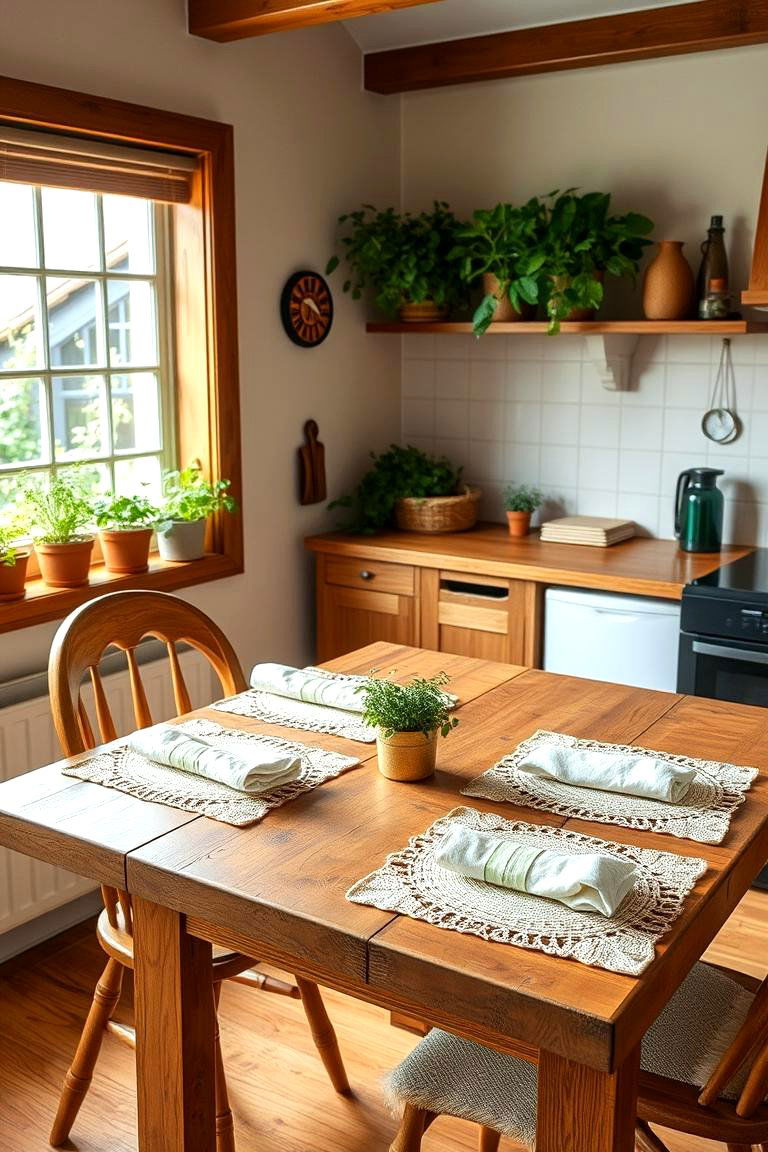
Bringing softness and natural texture into your kitchen, organic cotton textiles are a simple yet effective way to enhance the organic feel. Consider using organic cotton for your curtains, dish towels, and even seat cushions. These natural fibers are gentle on the skin and environmentally friendly, avoiding the harsh chemicals often found in conventional textiles. With a wide array of colors and patterns available, you can easily add pops of personality while maintaining a cohesive and organic aesthetic throughout your kitchen space.
5. Indoor Herb Garden

What better way to embrace the organic spirit than by incorporating an indoor herb garden into your kitchen design? Imagine fresh basil, mint, and rosemary readily available for your culinary creations. This not only adds a touch of vibrant greenery but also provides fresh, flavorful ingredients right at your fingertips. Consider installing a wall-mounted system, dedicating a sunny windowsill, or using stylish countertop planters to bring this refreshing and functional element into your organic kitchen.
6. Natural Light Maximization
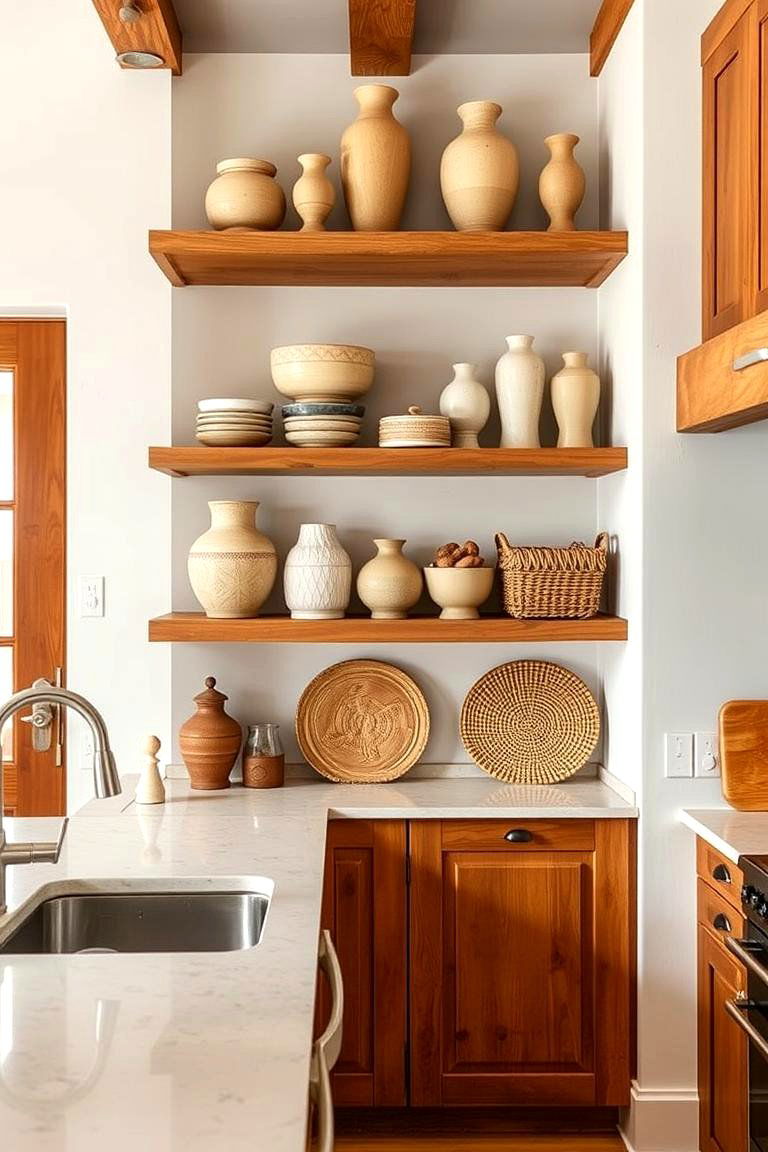
The abundance of natural light is a cornerstone of organic design, and your kitchen should be no exception. Consider large windows or skylights to flood the space with daylight, reducing the need for artificial lighting during the day. This not only creates a brighter and more inviting atmosphere but also connects you with the natural world outside. Sheer curtains or blinds can help diffuse the light and maintain privacy while still allowing ample sunlight to permeate your organic kitchen.
7. Open Shelving with Natural Accents
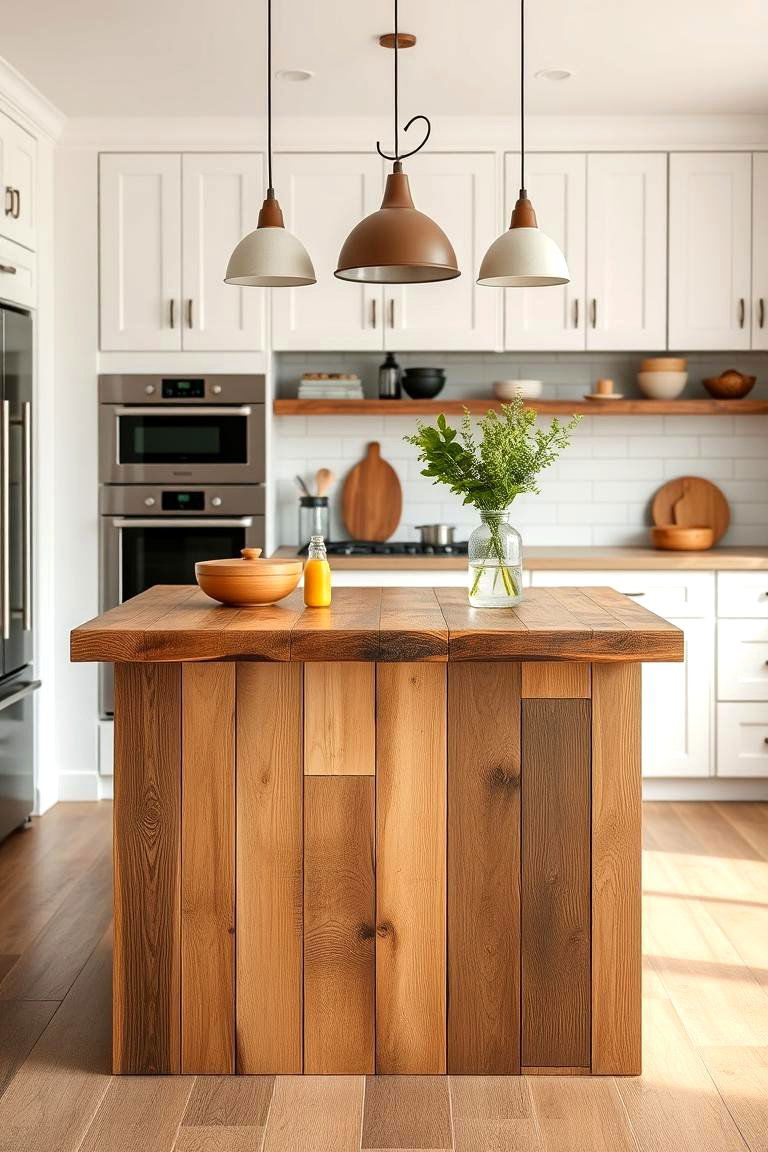
Another way to enhance the organic feel is by incorporating open shelving made from natural materials like wood or bamboo. This allows you to display your beautiful dishware, glassware, and perhaps even some potted plants, adding visual interest and a touch of personality. Consider styling your shelves with natural accents like ceramic vases, wooden bowls, and woven baskets to further enhance the organic aesthetic of your kitchen.
8. Reclaimed Wood Elements
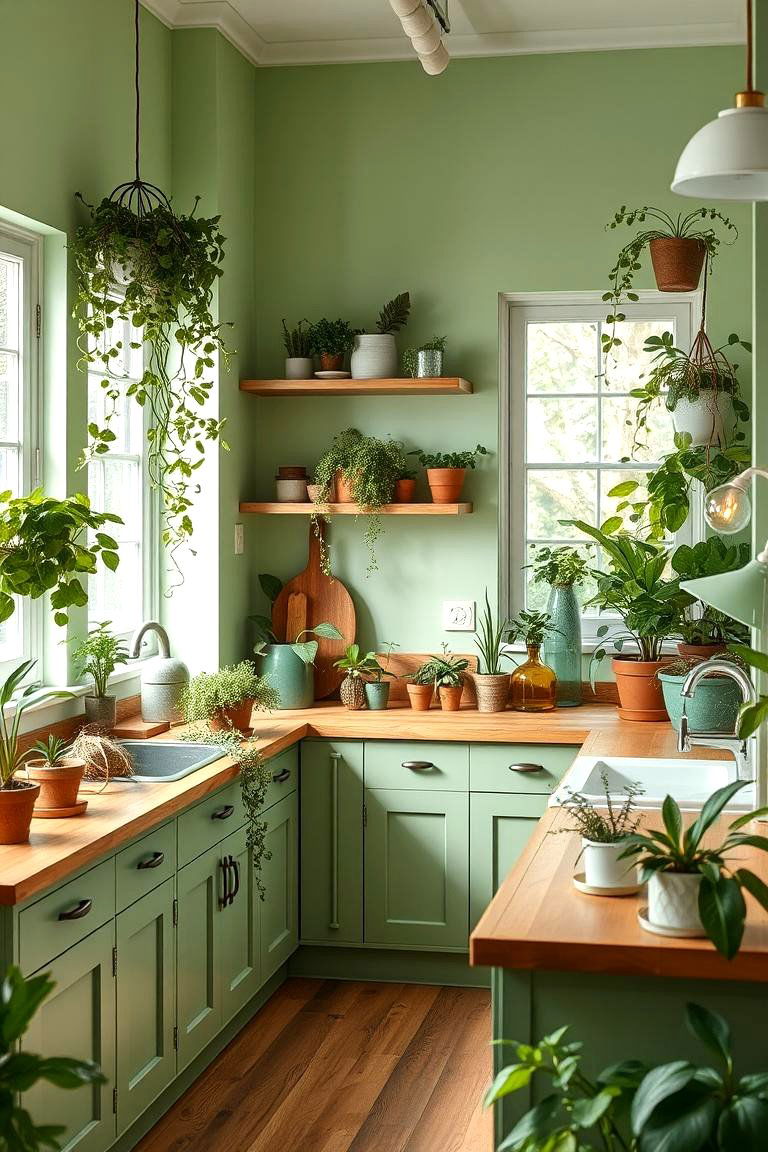
For a touch of rustic charm and sustainable design, consider incorporating reclaimed wood elements into your organic kitchen. This could be in the form of a kitchen island, accent wall, or even shelving. Reclaimed wood tells a story and adds a unique character to the space, while also being an environmentally responsible choice by giving old materials new life. The inherent imperfections and variations in reclaimed wood contribute to the natural and organic feel you're aiming for.
9. Low-VOC Paints and Finishes
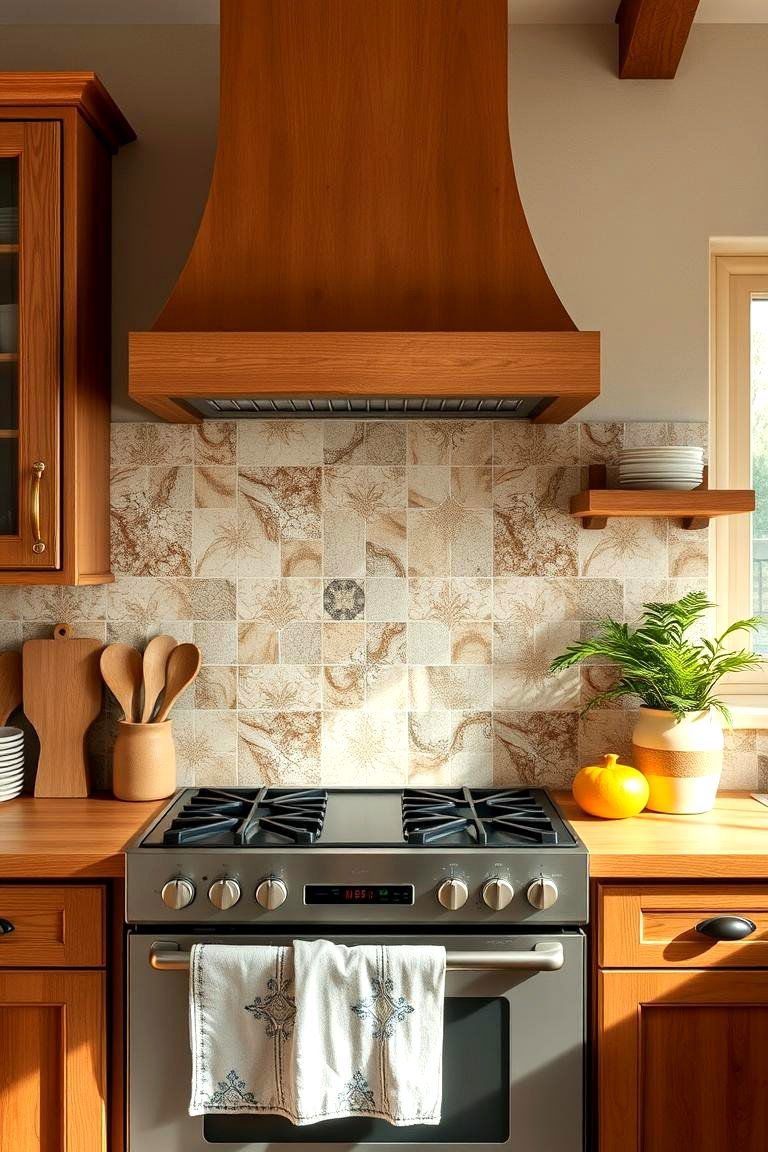
When selecting paints and finishes for your organic kitchen, prioritize low-VOC (volatile organic compound) options. These paints release fewer harmful chemicals into the air, contributing to a healthier indoor environment for you and your family. With a wide range of colors and finishes available, you don't have to compromise on style to make this environmentally conscious choice for your organic kitchen design.
10. Ceramic or Terracotta Backsplash
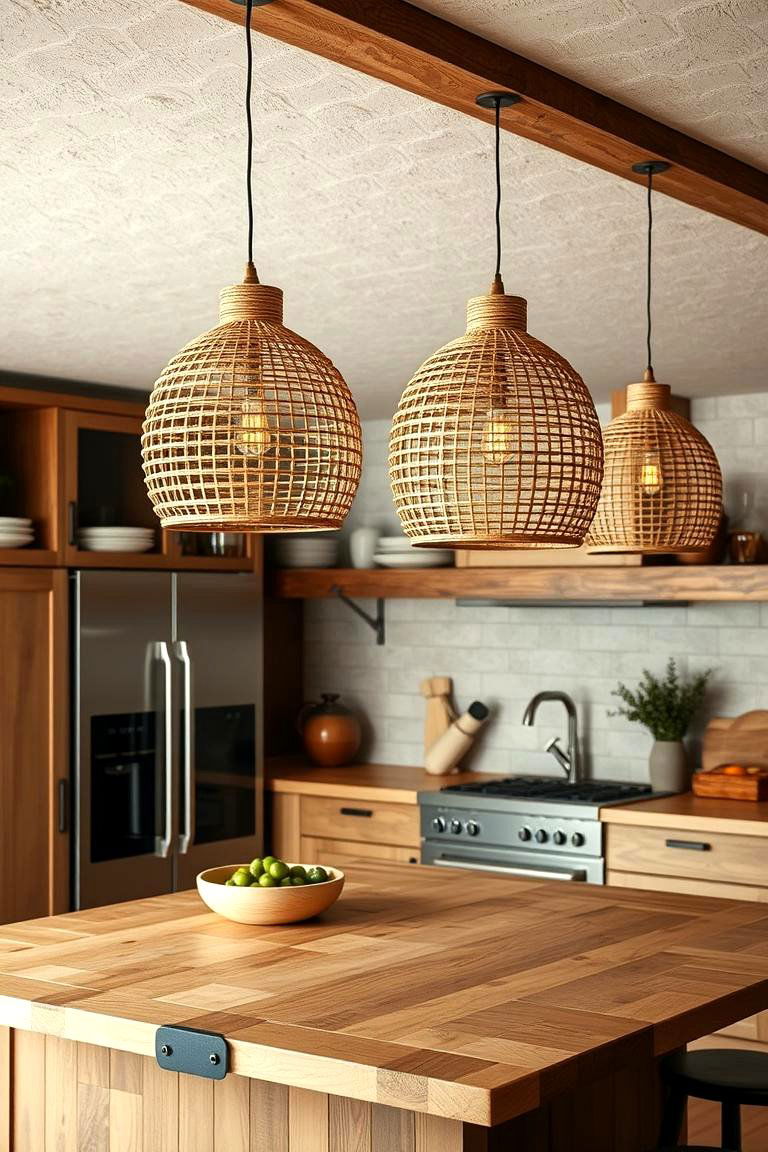
Bringing an earthy and handcrafted feel to your kitchen, a ceramic or terracotta backsplash is a wonderful addition to an organic design. These natural materials offer a variety of textures and colors, allowing you to create a unique and visually appealing focal point above your countertops. Consider hand-painted tiles for an extra touch of artistry and individuality in your organic kitchen space.
11. Woven Light Fixtures
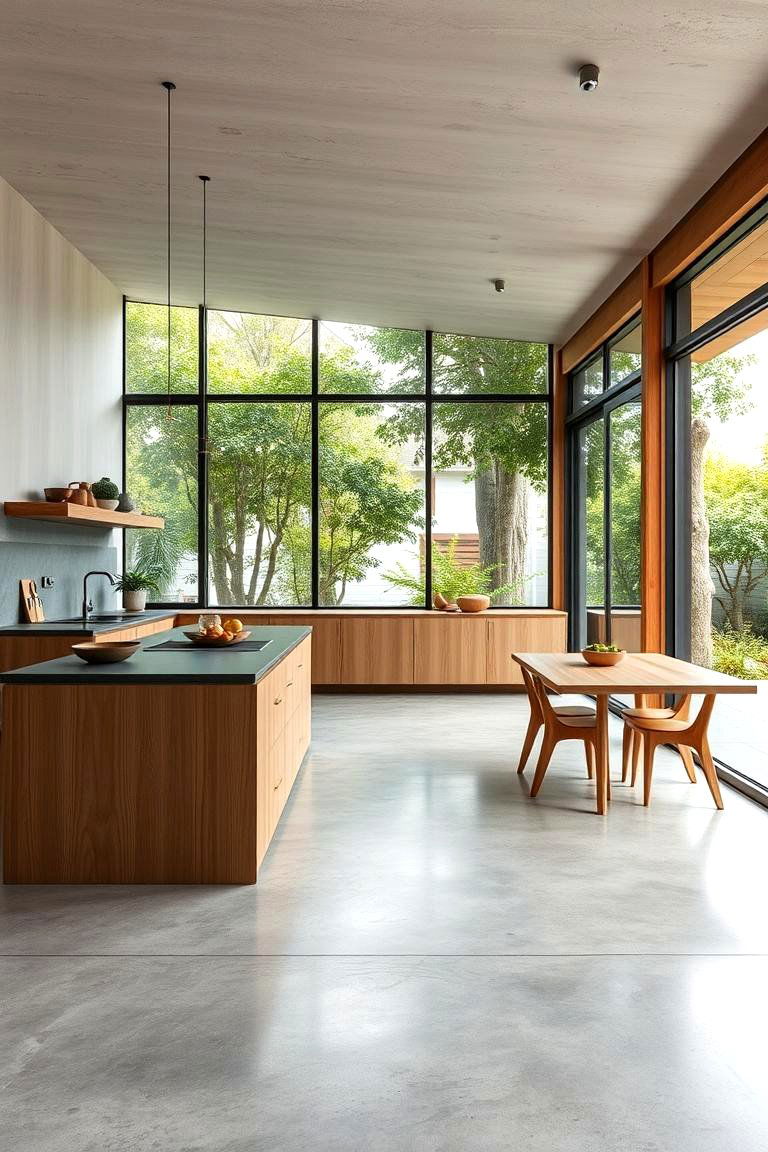
Consider the subtle yet impactful addition of woven light fixtures to enhance the organic ambiance of your kitchen. Materials like rattan, bamboo, or jute can add a natural texture and warmth to the space. These fixtures often cast beautiful patterns of light, creating a cozy and inviting atmosphere, especially during the evening. Choose designs that complement your overall organic aesthetic, whether it's bohemian, coastal, or rustic.
12. Stone or Concrete Flooring
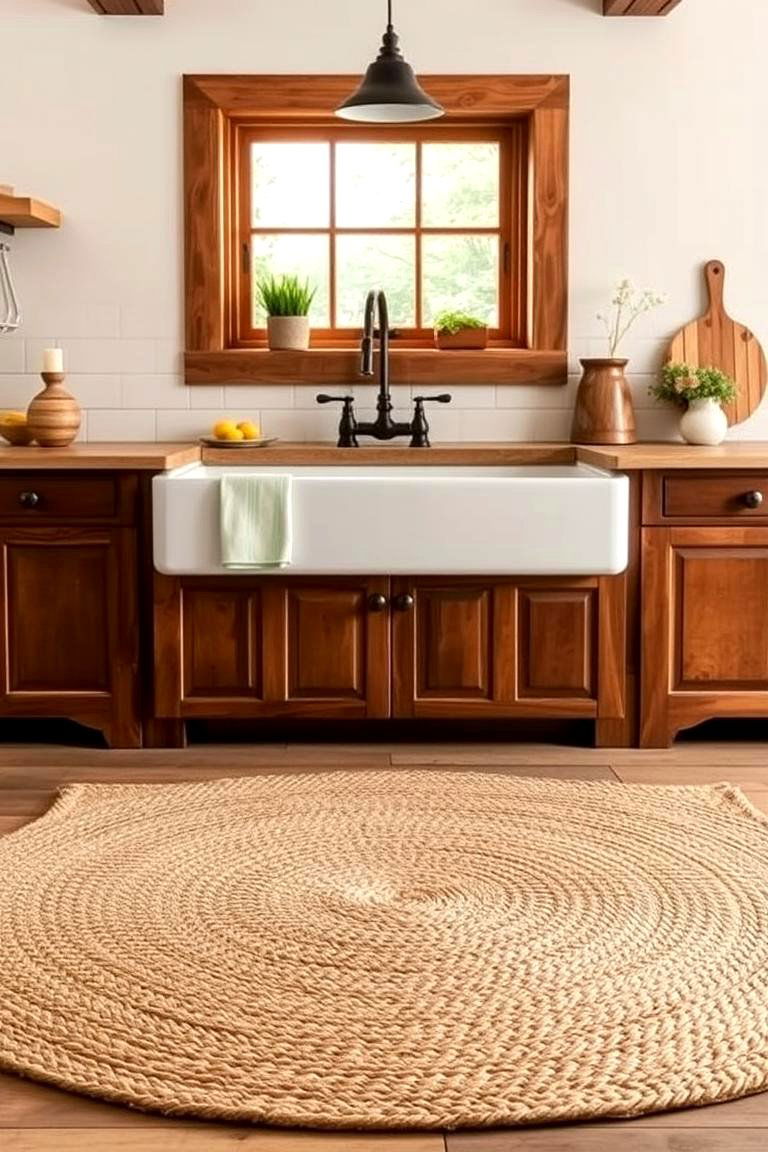
For a durable and naturally appealing flooring option in your organic kitchen, consider stone or concrete. These materials offer a sense of grounding and permanence, aligning perfectly with the organic design philosophy. Concrete can be stained or polished to achieve various looks, while natural stone offers unique variations in color and texture. Both options are also easy to clean and maintain, making them practical choices for a busy kitchen.
13. Natural Fiber Rugs
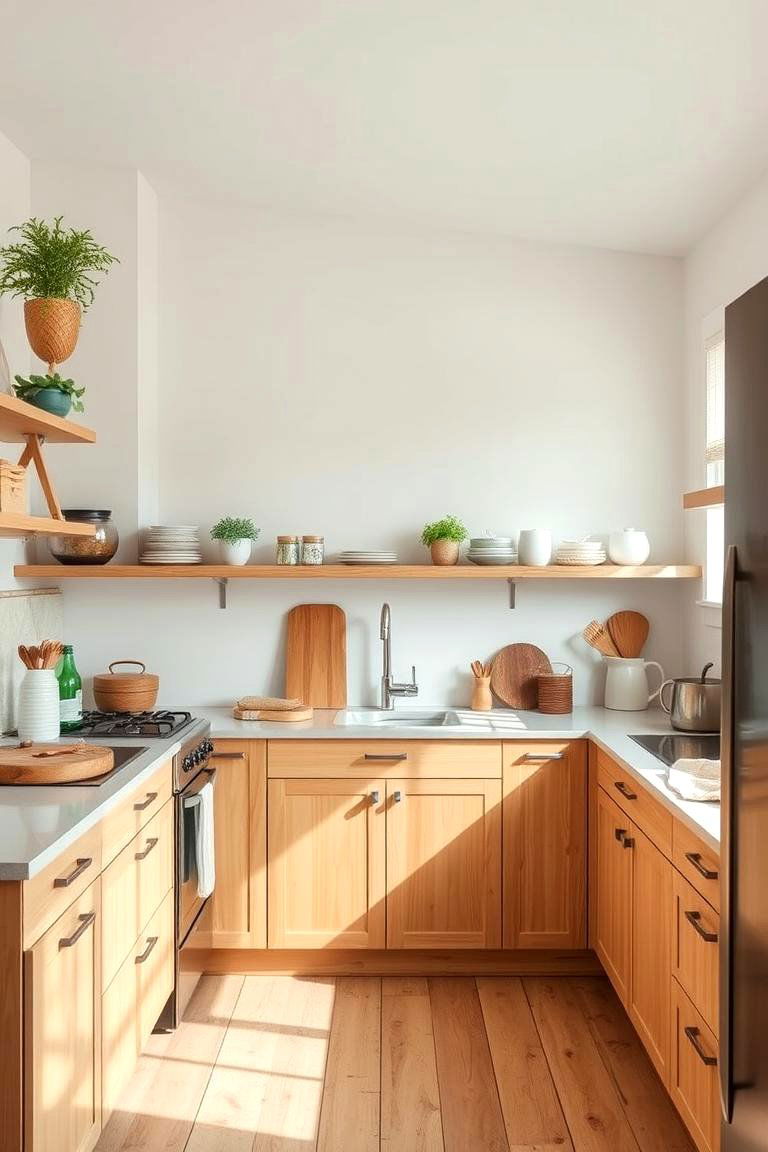
Adding warmth and texture underfoot, natural fiber rugs like jute, sisal, or wool are excellent additions to an organic kitchen. These rugs not only enhance the comfort of the space but also contribute to the overall natural aesthetic. Choose rugs with neutral tones or subtle patterns to complement your other organic elements without overwhelming the design. Consider placement near the sink or prep areas for added comfort and style.
14. Minimalist Design Approach
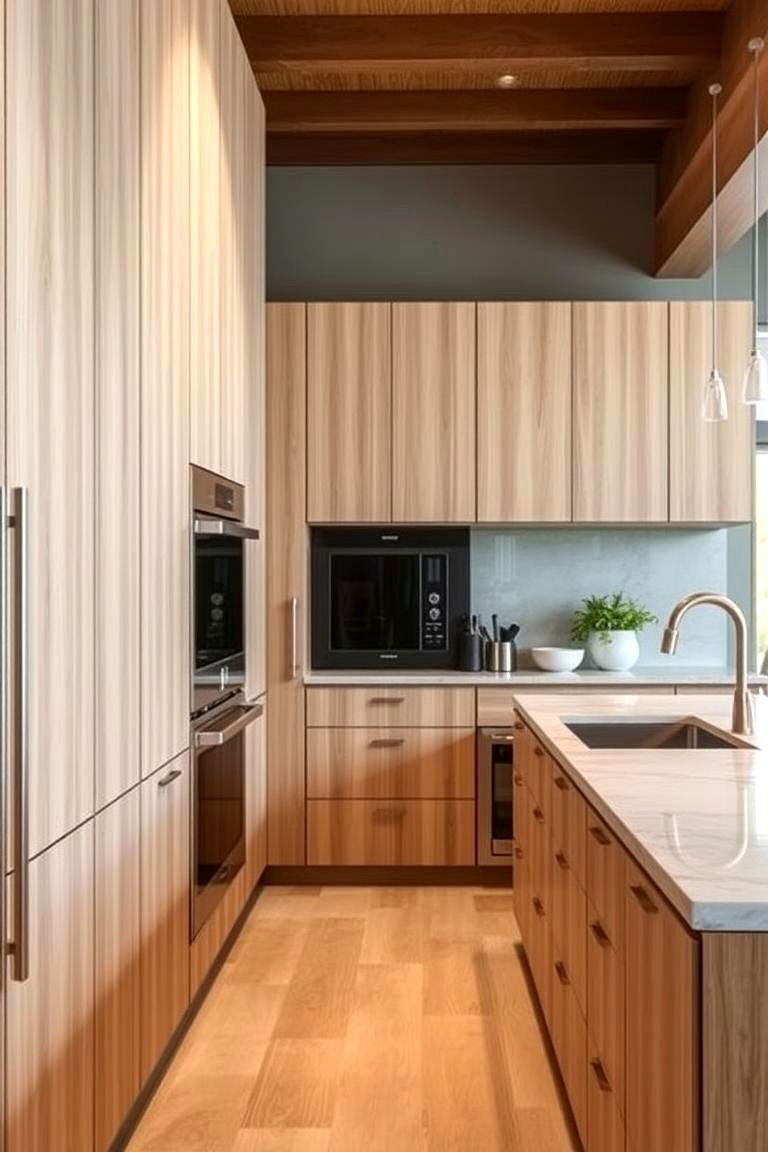
The core of organic design often embraces simplicity and functionality. Consider a minimalist approach to your kitchen, focusing on essential elements and decluttering unnecessary items. This allows the natural materials and textures to truly shine, creating a calm and serene atmosphere. By keeping the design clean and uncluttered, you enhance the organic feel and create a more efficient and enjoyable cooking environment.
15. Integrated Appliances

For a seamless and streamlined look in your organic kitchen, consider integrating your appliances. This helps to minimize visual clutter and allows the natural materials and design elements to take center stage. Integrated refrigerators, dishwashers, and microwaves blend seamlessly with your cabinetry, contributing to a cohesive and sophisticated organic aesthetic.
16. Live Plants as Decor
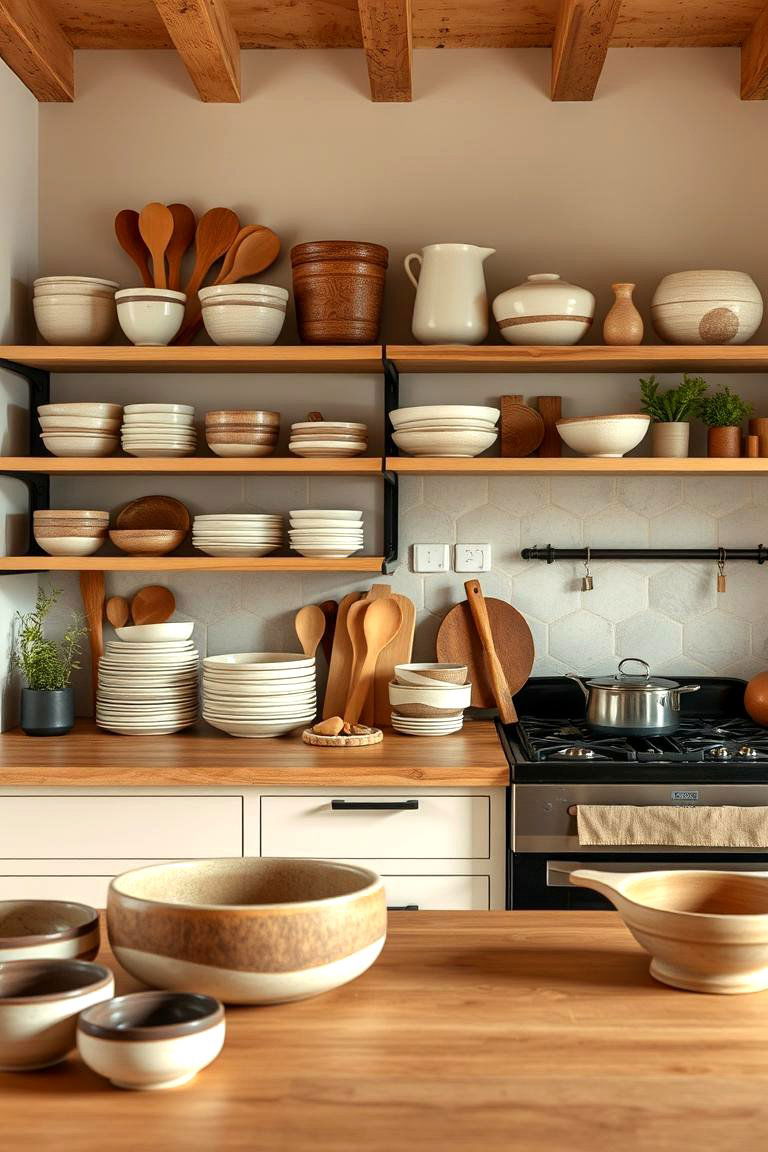
Bringing life and vibrancy into your kitchen, incorporating live plants as decor is a fundamental aspect of organic design. Beyond their aesthetic appeal, plants also help to purify the air, creating a healthier indoor environment. Consider placing potted plants on countertops, shelves, or even hanging them from the ceiling to add a touch of nature and freshness to your organic kitchen space.
17. Handmade or Artisanal Decor
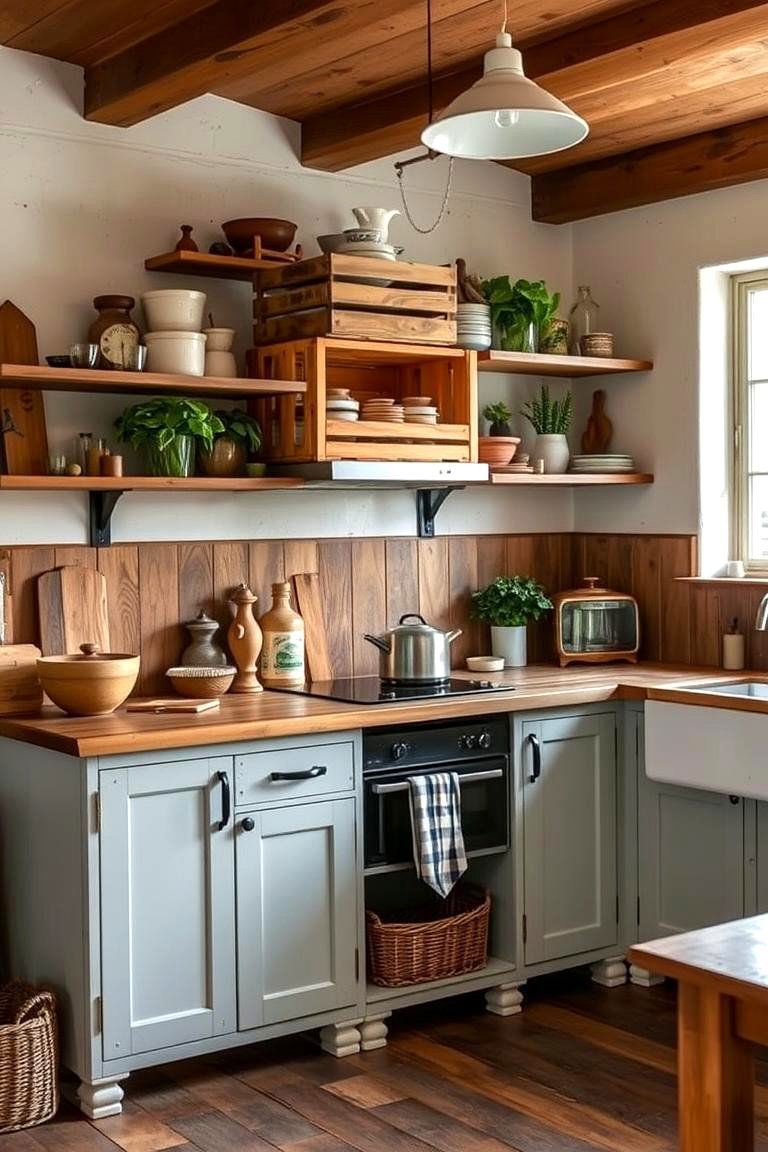
Adding unique character and a personal touch to your organic kitchen, consider incorporating handmade or artisanal decor items. This could include hand-thrown pottery, locally crafted wooden utensils, or artwork made from natural materials. These elements add a sense of authenticity and connection to the space, reflecting the organic design philosophy of valuing natural and handcrafted items.
18. Upcycled or Repurposed Items
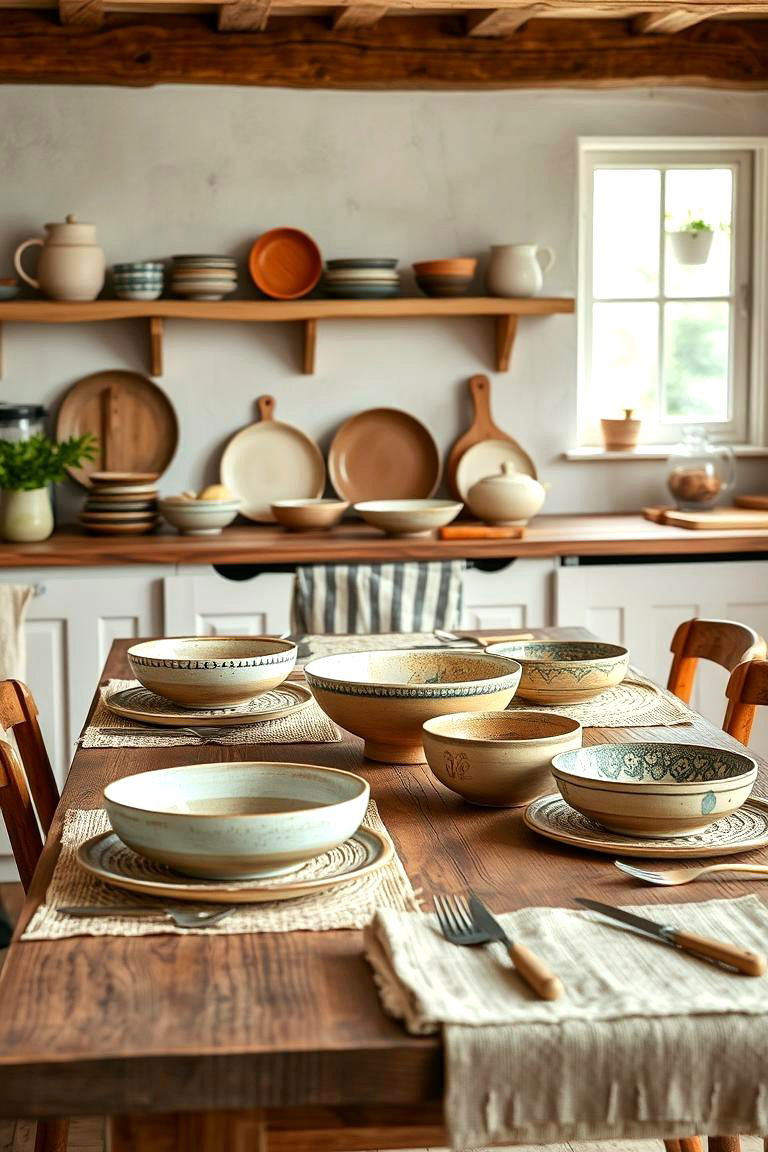
Embrace sustainability by incorporating upcycled or repurposed items into your organic kitchen design. This could be anything from using old wooden crates for storage to transforming vintage furniture into a kitchen island. Upcycling adds a unique and eco-friendly element to your space, aligning perfectly with the principles of organic design and reducing waste.
19. Earthenware or Stoneware Dishes

Consider the subtle yet impactful choice of earthenware or stoneware dishes for your organic kitchen. These natural materials bring an earthy and rustic feel to your table setting and open shelving displays. Their often imperfect shapes and natural glazes add to the organic aesthetic, creating a connection to the earth and handcrafted traditions.
20. Cork Accents
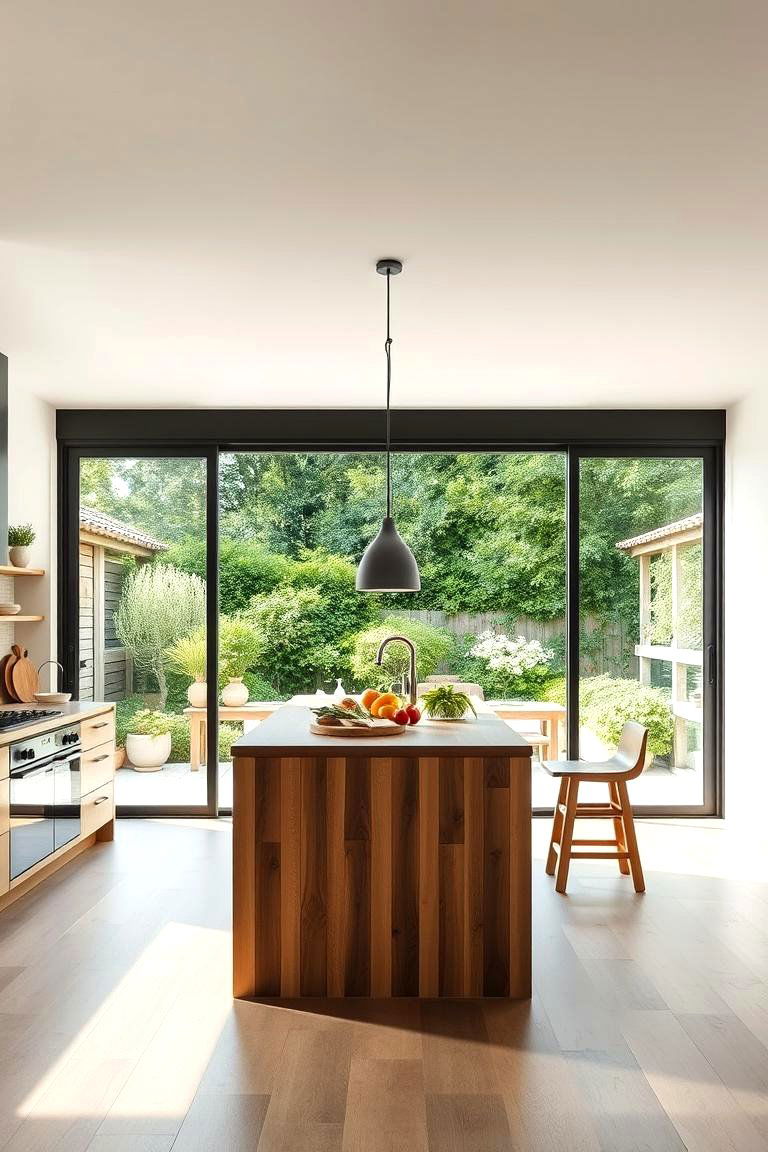
For a unique and sustainable touch, consider incorporating cork accents into your organic kitchen design. Cork is a renewable resource that offers excellent insulation and sound absorption properties. You could use it for flooring, backsplash, or even as decorative elements. Its natural texture and warm tones add a subtle yet distinctive organic element to the space.
21. Open Connection to Outdoors
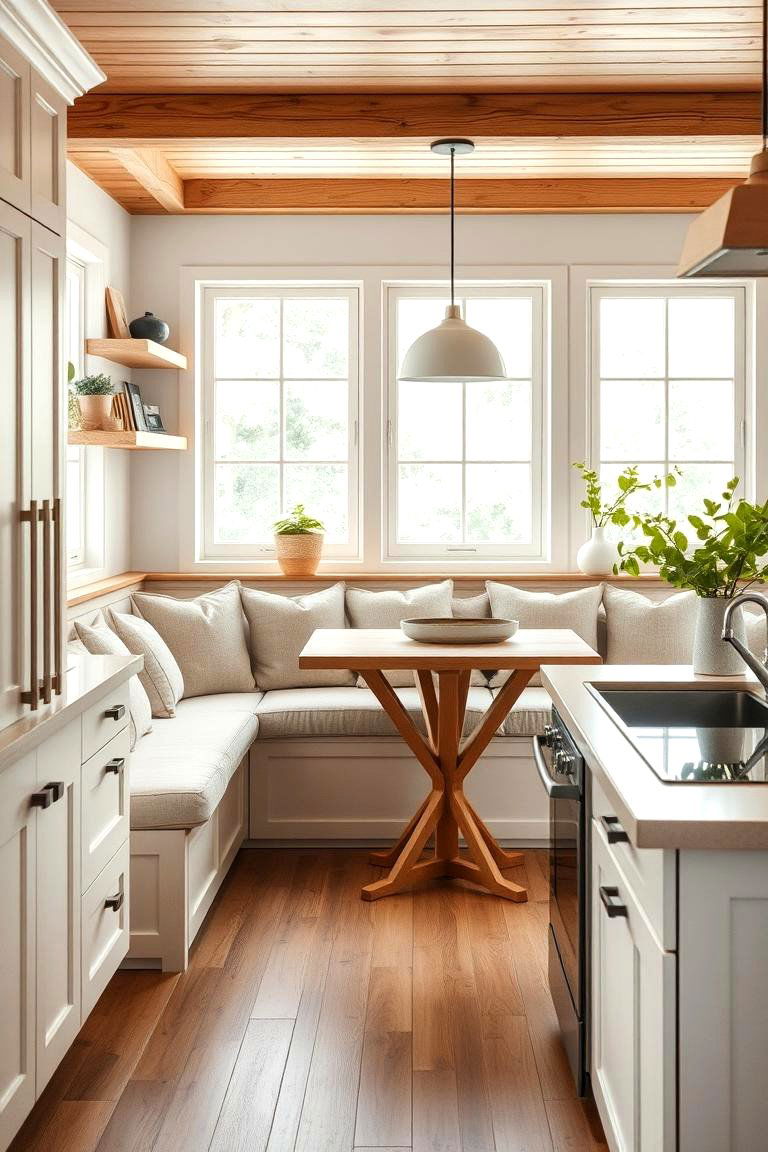
If possible, design your organic kitchen to have an open connection to the outdoors. This could involve large sliding doors or windows that lead to a patio or garden. This seamless transition between indoor and outdoor spaces enhances the feeling of being connected to nature and allows for fresh air and natural light to flow freely into your kitchen.
22. Built-in Banquette Seating with Natural Upholstery
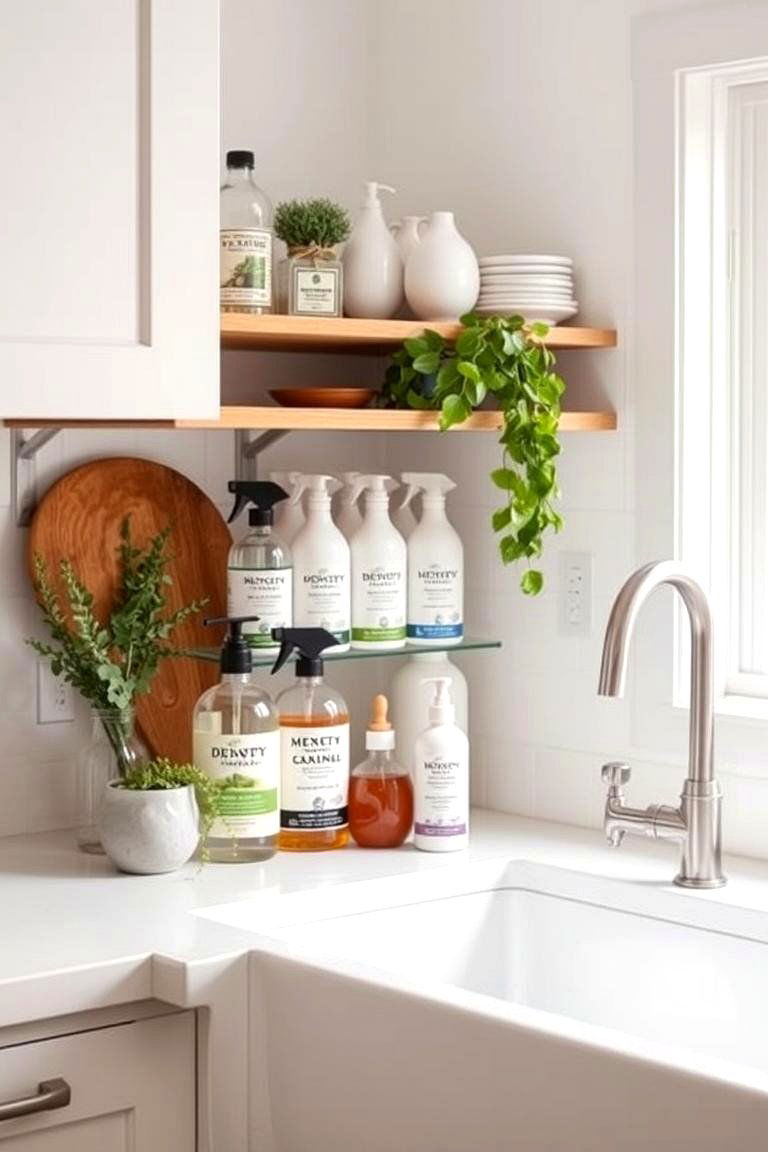
Creating a cozy and inviting dining nook in your organic kitchen, consider built-in banquette seating with cushions upholstered in natural fabrics like linen or organic cotton. This not only maximizes seating space but also adds a comfortable and organic touch to the area. The natural textures of the upholstery contribute to the overall relaxed and welcoming atmosphere.
23. Natural Cleaning Products

Maintaining the organic integrity of your kitchen extends to the cleaning products you use. Opt for natural and non-toxic cleaning solutions that are safe for your family and the environment. Many effective natural cleaning products can be made with simple ingredients like vinegar, baking soda, and essential oils, further supporting the healthy and organic ethos of your kitchen.
24. Focus on Functionality and Flow
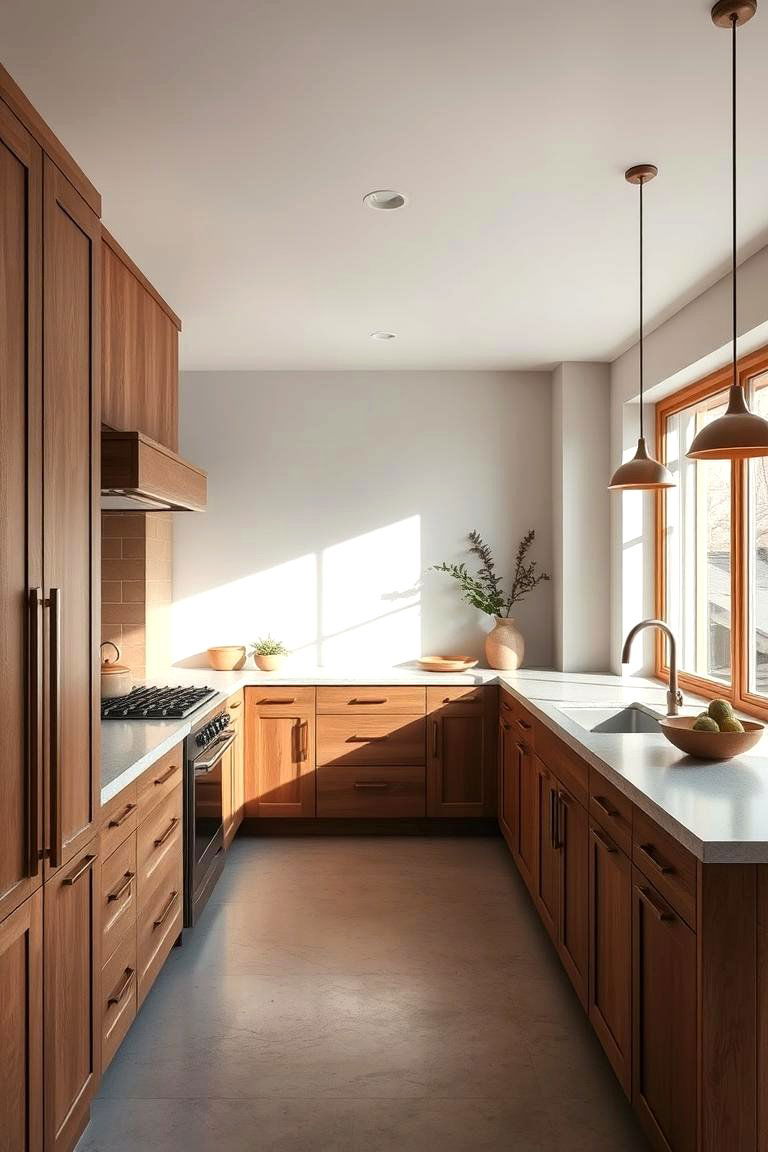
Finally, an essential aspect of organic kitchen design is prioritizing functionality and flow. Ensure that your layout is practical and efficient, making it a joy to cook and spend time in the space. Consider the natural movement within the kitchen and design it to support your daily routines, creating an organic rhythm that feels intuitive and harmonious.
Conclusion:
Embracing organic kitchen design is a journey towards creating a space that resonates with nature's inherent beauty and promotes well-being. By thoughtfully incorporating natural materials like wood and stone, maximizing natural light, and focusing on sustainability, you can transform your kitchen into a sanctuary that nourishes both your body and soul. These 24 organic kitchen design ideas offer a starting point for creating a space that is not only aesthetically pleasing but also environmentally conscious and deeply connected to the natural world.


